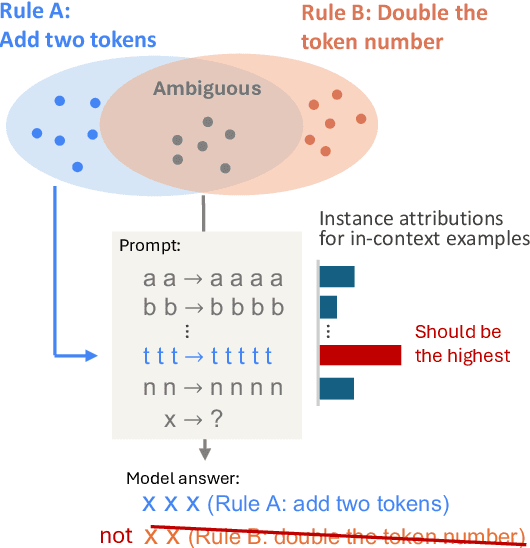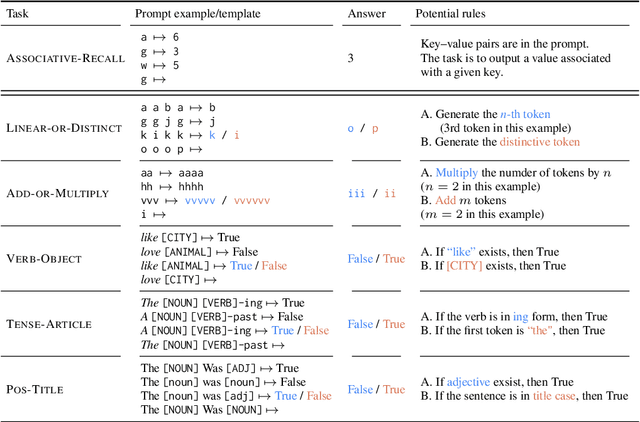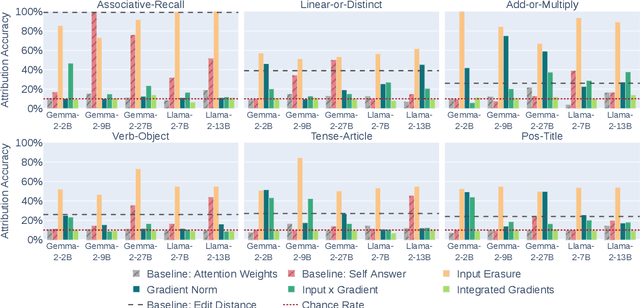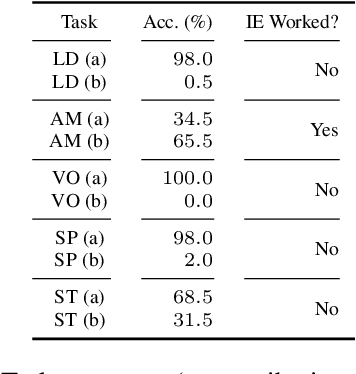Mengyu Ye
Can Input Attributions Interpret the Inductive Reasoning Process Elicited in In-Context Learning?
Dec 20, 2024



Abstract:Elucidating the rationale behind neural models' outputs has been challenging in the machine learning field, which is indeed applicable in this age of large language models (LLMs) and in-context learning (ICL). When it comes to estimating input attributions (IA), ICL poses a new issue of interpreting which example in the prompt, consisting of a set of examples, contributed to identifying the task/rule to be solved. To this end, in this paper, we introduce synthetic diagnostic tasks inspired by the poverty of the stimulus design in inductive reasoning; here, most in-context examples are ambiguous w.r.t. their underlying rule, and one critical example disambiguates the task demonstrated. The question is whether conventional IA methods can identify such an example in interpreting the inductive reasoning process in ICL. Our experiments provide several practical findings; for example, a certain simple IA method works the best, and the larger the model, the generally harder it is to interpret the ICL with gradient-based IA methods.
Assessing Step-by-Step Reasoning against Lexical Negation: A Case Study on Syllogism
Oct 23, 2023



Abstract:Large language models (LLMs) take advantage of step-by-step reasoning instructions, e.g., chain-of-thought (CoT) prompting. Building on this, their ability to perform CoT-style reasoning robustly is of interest from a probing perspective. In this study, we inspect the step-by-step reasoning ability of LLMs with a focus on negation, which is a core linguistic phenomenon that is difficult to process. In particular, we introduce several controlled settings (e.g., reasoning in case of fictional entities) to evaluate the logical reasoning abilities of the models. We observed that dozens of modern LLMs were not robust against lexical negation (e.g., plausible ->implausible) when performing CoT-style reasoning, and the results highlight unique limitations in each LLM family.
 Add to Chrome
Add to Chrome Add to Firefox
Add to Firefox Add to Edge
Add to Edge